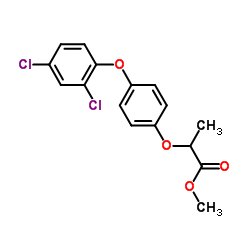Bioluminescence determination of enzyme activity of firefly luciferase in the presence of pesticides.
Snezana Trajkovska, Katerina Tosheska, Jean Jacques Aaron, Filip Spirovski, Zoran Zdravkovski
Index: Luminescence 20(3) , 192-6, (2005)
Full Text: HTML
Abstract
Firefly luciferase (EC 1.13.12.5) (FL) is the key enzyme in the firefly bioluminescence method (FB), which is widely used to determine the viability of living cells. The FB method can also be applied to monitoring the influence of different pollutants, such as pesticides. Firefly luciferase is a hydrophobic enzyme and its activity depends on the type of solvent, pH and substances present in the reaction mixture. The influence of three aromatic pesticides, including fenoxaprop-p-ethyl (I), diclofop-methyl (II) and metsulfuron methyl (III), on the enzyme activity was indirectly evaluated through the measurement of emitted light in the bioluminescence reaction, expressed in relative luminescence units (RLU). The reaction mixture used in the bioluminescence measurements consisted of: Tris buffer (pH 7.75), adenosine triphosphate (ATP) and ATP monitoring reagent, where FL is present. Ethanol-water solutions of each pesticide were then added at concentrations of 2.4 x 10(-4)-2.4 x 10(-8) mol/L. The FL activity inhibition factors (FL In%) were determined. The FL activity was maximally inhibited in the presence of all pesticides under study at a concentration of 2.4 x 10(-4) mol/L and was lowered by about 15-26% for pesticide I at concentrations of 2.4 x 10(-5)-2.4 x 10(-8) mol/L, whereas pesticides II and III, applied in the same concentration range, showed smaller FL inhibition values (5.3-20%). The pesticide degradation products (obtained after a 1 month period), measured in the same experimental conditions, in most cases exhibited a much less inhibitory effect on the enzyme activity than the corresponding initial pesticide.
Related Compounds
| Structure | Name/CAS No. | Molecular Formula | Articles |
|---|---|---|---|
 |
DICLOFOP-METHYL
CAS:51338-27-3 |
C16H14Cl2O4 |
|
Characterisation of target-site resistance to ACCase-inhibit...
2003-02-01 [Pest Manag. Sci. 59(2) , 190-201, (2003)] |
|
Genetic control of a cytochrome P450 metabolism-based herbic...
2011-05-01 [Heredity (Edinb.) 106(5) , 817-24, (2011)] |
|
Recurrent selection with reduced herbicide rates results in ...
2005-04-01 [Theor. Appl. Genet. 110(6) , 1154-66, (2005)] |
|
Time-dependent degradation and toxicity of diclofop-methyl i...
2009-06-01 [Environ. Sci. Pollut. Res. Int. 16(4) , 459-65, (2009)] |
|
Environmental effects of inclusion complexation between meth...
2005-08-24 [J. Agric. Food Chem. 53(17) , 6744-9, (2005)] |